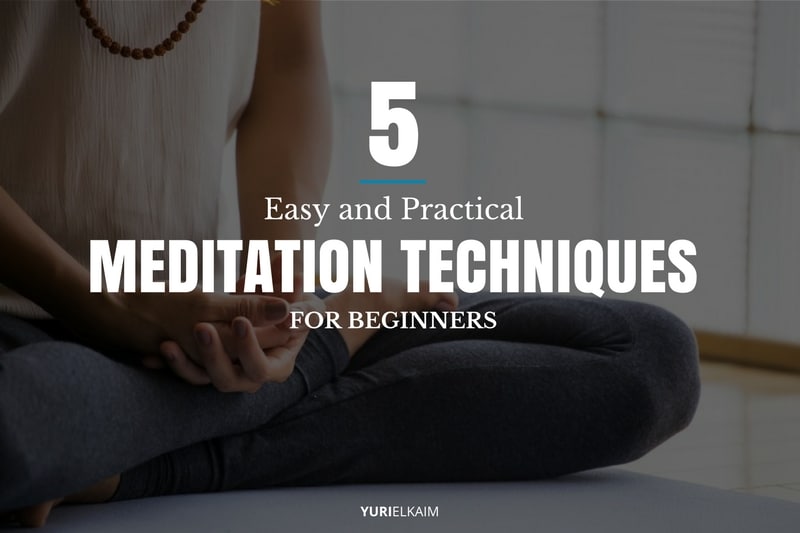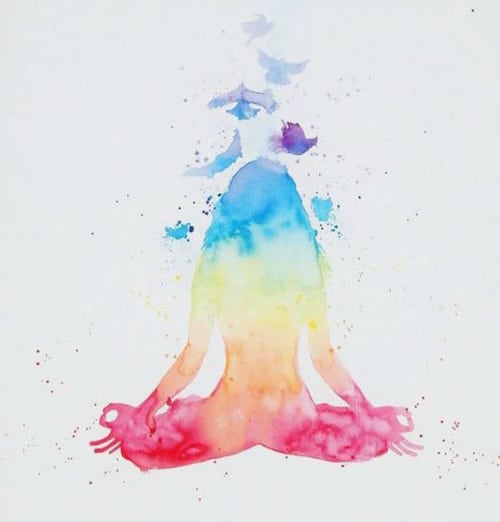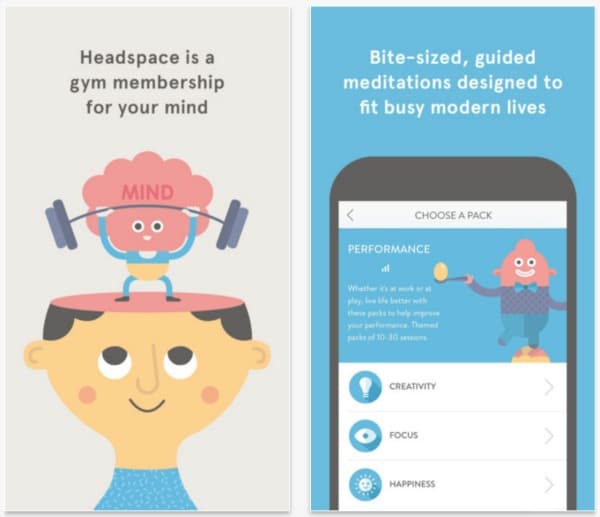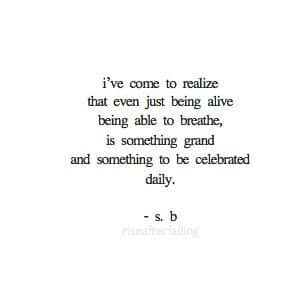Among the hustle and bustle of life, sometimes we all need to sit down, take a deep breath, and meditate.
Once thought of as an activity reserved only for hippies, the truth is that meditation can bestow some pretty big benefits on everyone.
Taking just a few minutes out of your day to relax and unwind can make an immense difference in both your physical and mental health.
It relieves stress, helps fine-tune your focus, and gets your mind in the right place to start your day off on a positive note.
Besides that, check out these other benefits of meditating. It:
- Lowers your blood pressure
- Strengthens the immune system
- Helps regulate your emotions
- Increases memory and focus
- Reduces levels of stress hormones
Sounds pretty good, right?
Before you start pulling out your yoga mat and chanting, “Namaste,” let’s answer some common questions about meditation.
What is Meditation?
You may already have a preconceived notion of what meditation entails.
There’s a good chance that it’s probably influenced by what the media has portrayed it as in the past, as an activity reserved for
- Tibetan monks or
- 1960s hippies wearing tie-dye shirts and dreadlocks.
But in reality, meditation can be practiced by anyone and can benefit nearly everyone.
While it may not have entered the mainstream quite yet, people from all walks of life practice meditation in order to reap its many benefits.
But what exactly is meditation?
Coming up with the ultimate definition is tricky because there are many different ways to do it, with several types and styles.
The goal is always the same, though. It’s to clear the mind – no worries or stressors of the day invading your brain.
Meditation can be broken down into two main groups:
- Active meditation involves some form of movement, like yoga.
- Passive meditation requires stillness, usually allowing you to rest comfortably and focus on breathing exercises or mindfulness.
Both forms of meditation come with an impressive set of benefits. And I believe it’s something we should all build into our daily routine.
So regardless of whether you’ve never meditated a day in your life or you’ve already got it down pat, I’ve got you covered.
Take a look at my 5 tips on meditating for beginners and start making a habit out of meditating today.
5 Meditation Techniques for Beginners
1. Start with the Basics
If you’re just looking to dip your toes in the waters of meditation, all you have to do is find an extra 5 to 10 minutes in your day to squeeze in a simple self-guided meditation session.
Simply find a comfortable and quiet place, and sit or lie down in a stable position. The key here is to allow yourself to totally relax.
Next, close your eyes and focus on becoming present in the moment. Listen to your body, become mindful of any tension or stress that you feel, and hear what’s going on in your surroundings.
Put the focus on your breathing, taking note of each breath and feeling the movement in your body. Then shift the focus to the rest of your body, taking note of how you feel from your fingers all the way down to your toes.
This process only takes a few minutes per day, but it’s an easy and no-frills technique to get you started in the world of meditation.
2. Download a Meditation App
If you’re looking to mix it up a bit, a meditation app might be just what you need.
Unguided meditation, which allows you to guide yourself through the process, can work for many people, but sometimes it also helps to have a little more instruction and direction if you’re a beginner.
Meditation apps are the perfect solution. They provide you with a variety of different guided meditation tracks, which offer step-by-step guidelines, allowing you to make the most of your meditation session.
Most also cater to a wide variety of experience levels, offering everything from guided sessions to timers that allow you to set the length of your session if you’re looking to do it on your own.
While many are free, several offer subscription packages and programs if you want more from your practice.
A few of my personal favorites include Headspace, Calm, Buddhify, and Omvana, all of which are available to download on your smartphone so you can access them anytime, anywhere.
3. Try Walking Meditation
Once you’ve got the basics of meditation down, walking meditation is another awesome way to start spicing things up.
While you’re still getting the hang of this, it might be best to start somewhere somewhat quiet and distraction-free.
It’s done pretty much exactly how it sounds: start walking slowly and channel all of your focus down to your feet.
Feel when your foot is flat on the ground, the roll of your foot, and when your toes lift off. Get in tune with your body and redirect your attention right back down to your feet anytime your mind starts to wander.
This active meditation technique does double-duty as both a stress reliever and a low-key form of exercise.
Best of all, if you’re truly crunched for time, it can be done anywhere: on your way to work, while you’re walking your dog, or just about any time you’re on the go.
4. Don’t Worry if You’re Doing It “Right”
All too often we get stressed out about doing things the right way. We get nervous about looking silly or inexperienced.
This happens pretty regularly. Think about how often people avoid going to the gym because they’re afraid of being judged or how frequently we avoid trying new things for fear of doing something wrong.
The same thing, unfortunately, happens with meditation. When you’re just starting out, you might get stuck on how you’re supposed to be doing things instead of just doing it.
We worry whether we’re breathing correctly, sitting the right way, or even thinking the right thoughts. It makes it virtually impossible to get a clear mind and really focus on what you’re supposed to.
The best thing about meditation is that there are so many different ways to do it and there’s not one set method that everyone needs to follow.
The key is to stop worrying about what others are doing or whether what you’re doing is right versus wrong and instead just do it.
It doesn’t matter if you’re breathing right, positioned properly, or if your mind wanders sometimes. In fact, rather than clearing your mind entirely, meditation is all about becoming aware of your thoughts and returning to being in the present moment.
As time goes on, you’ll find what works for you and develop your own personal style, but that of course takes time and practice.
For now, as you’re getting started, do what feels right and natural. Listen to your body instead of your fears and self-doubt. Over time, you’ll get the hang of it.
5. Try an Exercise in Gratitude
Here’s a question: right when you wake up in the morning, what are the first thoughts that pop into your brain?
If you’re like most people, you probably think about what’s going on at work, what you’re going to make for breakfast, or those million rows of unchecked boxes still waiting on your to-do list.
Instead of jumping right into your day, take two quick minutes right when you wake up to practice an exercise in gratitude, adjust the focus of your day, and start it off on a positive note.
Close your eyes and think of someone in your life that you’re grateful for. Really visualize their face and bring your attention to the minute details. Then send them a silent thank you for being in your life.
Repeat this gratitude exercise for a few more people. These can be people who are currently in your life or perhaps people who have made a difference in your life in the past.
Starting your day like this can bring a sense of closeness to the people you surround yourself with and strengthen your personal connections. It also helps you fine-tune your focus for the day instead of diving head-first into a to-do list.
Make Time to Meditate
The best way to improve and progress with your meditation is to make it into a daily habit.
You can practice meditation without feeling like you have to break out the candles and gemstones. You can do it pretty much anywhere, whenever you need a “reset”: first thing in the morning, last thing at night, on your commute, or even in line at the grocery store.
Using these beginner meditation techniques, it’s easy to get in the zone to clear your mind and unwind.
Free up just a few minutes per day and you’ll enjoy the benefits that come with less stress and improved mental focus in no time flat.
Want to Restore Healthy Energy?
Feeling tired and frazzled?
Try my natural, proven method of doubling your energy in less than a week. It’s been put to the test by more than 26,237 men and women, who have experienced the results firsthand .
Click the image below to get started!







